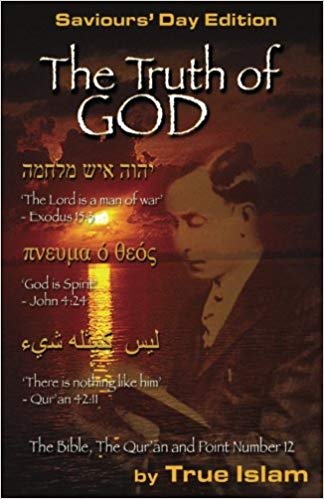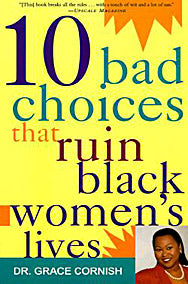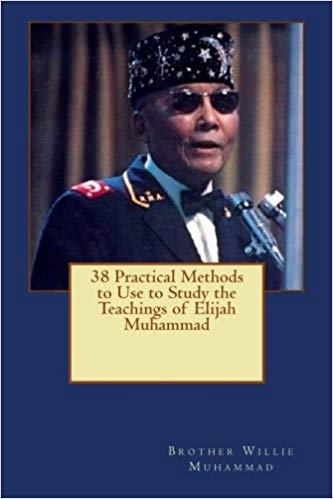
The Truth of God: The Bible, The Quran and Point Number 12
The God of the monotheistic ('one God') religions - Judaism, Christianity and Islam - is usually perceived in one of two ways: (1) as a formless spirit or (2) as a white man (see for example the image from the Biblioteca Aposotolica Vaticana which graces the front-jacket of Bernhard Lang's recent book, The Hebrew God: Portrait of an Ancient Deity: the image is of God the creator as a white-bearded, purple-robed, white male). But these conceptions of God, Dr. Wesley Muhammad demonstrates, are not rooted in the primary texts-Bible and Qu'ran-but instead stem from ideas and sensitivities of a later period and a foreign cultural-intellectual orientation (Hellenism or Greek philosophy). In contrast, the God of the Semitic monotheistic tradition, that tradition from which sprung the Bible and Qur'an, is neither formless nor white: he is a man-immortal, supremely holy, and possessing a black body.
This is the same black God that we encounter in the religious literature throughout the ancient Near East. The black body of God was the focus of the ancient mysteries, for example in New Kingdom Egypt and Vedic India, and was at the center of the esoteric tradition of theTemple in Jerusalem. One of the priests of this Temple and custodians of the secret of this Black God was the priest responsible for the editing of the Torah (the so-called Five Books of Moses or Pentateuch of the Old Testament) The Truth of God is a History-of-Religions study based on a critical examination of the primary texts of scripture (Bible, Qur'an, Sunnah) in Hebrew, Greek and Arabic, as well as the critical scholarship in the secondary literature: English, German and French.
This multi-lingual literacy has enabled Dr. Wesley Muhammad to answer the question, 'Who is God?' from the scriptural perspective with a depth not heretofore seen in writing. Dr. Wesley Muhammad has also drawn extensively from the religious texts, in translation, of the ancient Near East and India. With these primary and secondary sources he has been able to demonstrate that: (1) According to a widespread ancient Near and Far Eastern tradition, as evidenced in Egyptian, Sumerian/Babylonian, and Indic sources, God the creator was a black god, with a black body. The answers to such questions as: how did this body develop, of what substance was this body made, and why was this body black, were the focus of the mysteries in these nations. (2) The Creator God of Ancient Israel was this same Black God, and those responsible for forming the Hebrew Bible (Old Testament) were devotees of this Black God. (3) The Black God of ancient Near Eastern and Semitic monotheistic traditions was a self-created black man-god, whose physical (though not spiritual) beginnings were from an atom hidden in a primordial darkness.
The Hebrew of Genesis I specifies that this was a triple-darkness in which this atom was hidden and from which Elohim (God) emerged. (4) According to the Hebrew Bible and Arabic Qur'an the original black man, in his original state, was God on earth. (5) The Bible and the Qur'an/Sunnah, when allowed to speak their own languages (Hebrew, Greek and Arabic) affirm that God is a transcendent man, not a transcendent, formless spirit. (6) The God of Prophet Muhammad (PBUH) and the Qur'an is this same Black God of the ancient Near East and ancient Israel. The claim of modern Muslim theologians that God has no form and could never be a man is based on later theological developments away from the Qur'an and Sunnah, developments inspired by the introduction of Greek philosophic ideas into Islam.




